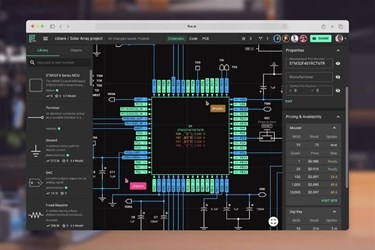Flux raises $12m as it looks to address inefficient electronics hardware design

US-based Flux, the developer behind the first fully collaborative, in-browser platform for electronics design and engineering, has raised $12m in a round led by Austin McChord’s Outsiders Fund.
The funding will be used to further expand the company’s development team, build additional features, and support marketing efforts.
Although Flux began in 2019, the platform’s launch comes at a time when hardware teams are overwhelmingly required to work remotely while chip shortages have simultaneously spurred organisations to adopt more agile design processes.
Flux was founded by Matthias Wagner, Christian Blank, and Lance Cassidy; whose collective experience includes hardware and software projects within Apple, Facebook, and NASA.
Flux’s browser-based platform offers instant collaboration and design access for electronics hardware designers, streamlining inefficient processes that have plagued the industry over many decades.
While the platform looks to enhance collaboration between engineers it also offers a Community Library, which enables the storage and sharing of open-source parts, simulation models, and schematics created by its user community. Much like GitHub, engineers will not have to start a project from scratch again.
Flux can run in any modern web browser and requires no software downloads or licenses. The platform features a programmable simulator that eliminates the need for repeated downloads and uploads into cumbersome, more resource-intensive simulators.
Combined with its real-time collaboration tools, version control, and automated part-sourcing, Flux helps teams work together, eliminating the hurdles and work stoppages that have afflicted engineers for decades.
“In my experience building hardware, I’ve found that designing a specific part or subassembly is only half the battle,” explained Jonathan Ng, a Flux investor and product manager at Nest and Waymo. “The real challenge is getting all of it to work together with an entire team of engineers approaching the problem from different angles, varying expertise, multiple time zones, and in different locations. Flux is building the hardware collaboration tool I wish we had.”
“The world has changed dramatically since the first commercial chip developers opened shop in the 1970s and 80s. Today’s chip shortage is just the latest sign of that,” added Wagner, who serves as Flux’s CEO. “The supply chain challenges we’re seeing now aren’t just a pandemic problem, they stem from decades of inattention to the design process itself. We built Flux to finally address these issues and we feel very fortunate to have found so many incredible investors who share our vision.”